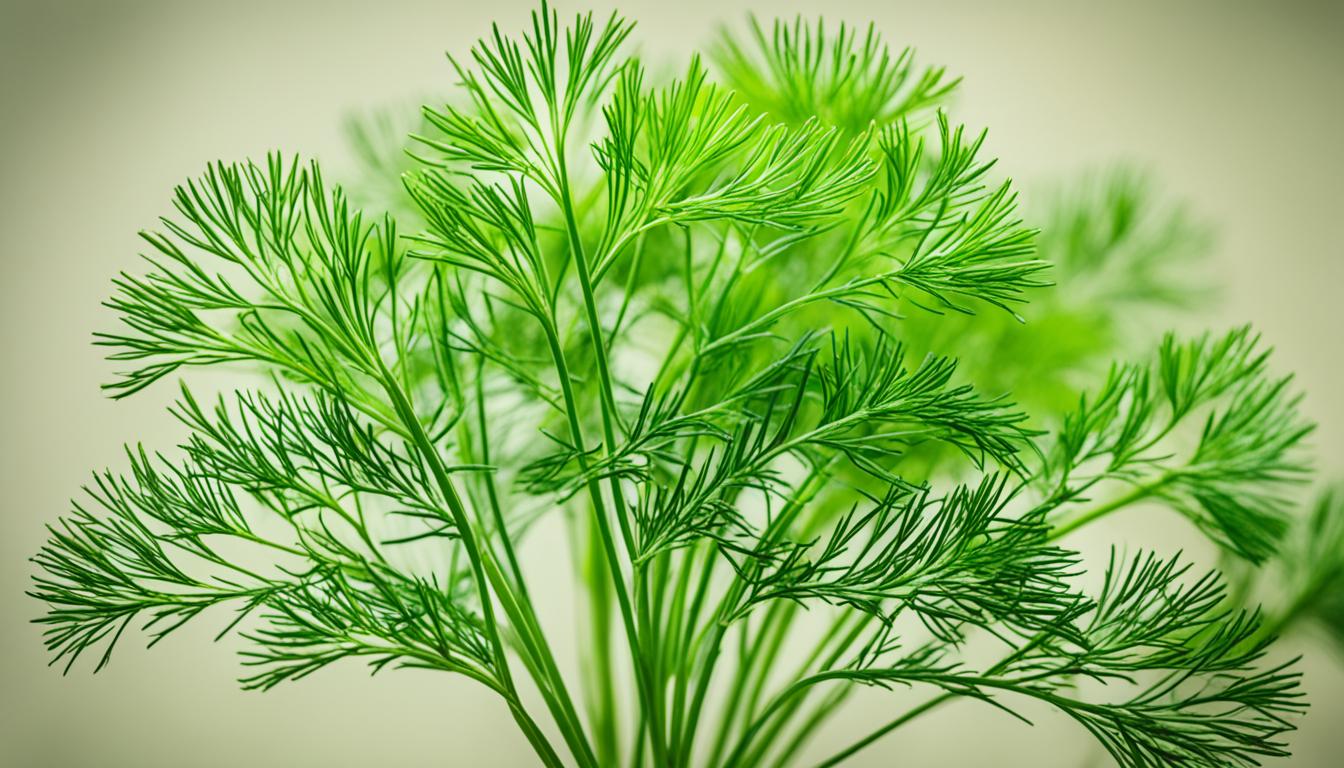Dill is a top choice for its versatility and flavor. It comes from Eastern Europe and has spread to many places. Now, it’s a key ingredient in many American recipes for its light and refreshing taste.
Dill goes well with many foods, from vegetables to dairy and international dishes. It’s great for pickling, making creamy dressings, or adding flavor to seafood. This herb makes any meal taste better.
The history and health benefits of dill are fascinating. It has been used for pickling for centuries and is now loved worldwide. Dill is a must-have for every cook, thanks to its lasting appeal and versatility.
The Versatile Charm of Fresh Dill
Dill is a culinary delight with a captivating aroma and vibrant flavor. It truly shines in the kitchen. This enchanting herb adds a refreshing and aromatic touch to many dishes.
Exploring Dill’s Unique Flavor Profile
Dill’s flavor is a mix of mild sweetness and subtle tanginess. It has notes of grass, anise, and citrus. This mix creates a flavor that delights and invigorates.
The history of dill in pickling goes back to ancient times. It has always played a key role in preserving and enhancing food flavors. From traditional dill pickles to modern dishes, dill is a flavor and preservation staple.
Dill is also good for your health. It’s full of antioxidants, vitamins, and minerals. Adding it to your diet can improve your overall wellness.
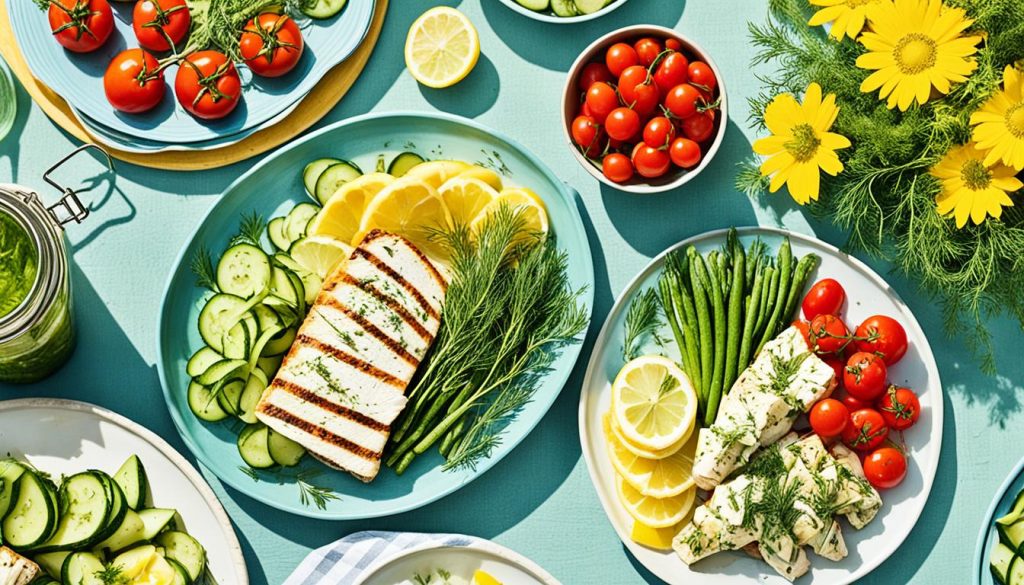
“Dill’s enchanting flavor adds a unique touch to a wide array of dishes, from savory to sweet, making it an indispensable herb in the culinary world.”
Looking to add freshness and vibrancy to your cooking? Or want to learn about dill’s history and health benefits? Dill is a culinary gem that should be in your kitchen.
Dill’s Culinary Versatility
Dill is an aromatic herb that adds a unique flavor to many dishes. It’s great for making light and refreshing recipes. Or, you can learn about its history in pickling.
Dill goes well with lean vegetables and dairy dishes. It makes seafood, salads, sauces, and soups taste better. Its flavor is a mix of sweet and licorice-like, perfect for Indian and Vietnamese dishes.
Dill isn’t just for savory dishes. It can also be used in sweet recipes. It adds freshness and complexity to fruits and baked goods. This herb is amazing for making light dishes or exploring pickling history.
| Dish Category | Dill’s Contribution |
|---|---|
| Seafood | Enhances the natural flavors of fish and shellfish |
| Salads | Adds a vibrant touch and complements various greens and vegetables |
| Sauces | Lends a creamy and herbal note to sauces and dressings |
| Soups | Infuses a refreshing and aromatic element to soups and broths |
| Baked Goods | Complements the sweetness in cakes, cookies, and pastries |
Dill is a versatile ingredient in the kitchen. It makes many dishes better, from light recipes to pickling. It’s also good for you, with antioxidants and digestive benefits.
A Brief History of Dill
Dill is a versatile and aromatic herb with a long history. It started in Eastern Europe and has been used for centuries. We can see its use in the tombs of Egyptian pharaohs, showing it’s been important in many cultures.
As trade and people moved, dill spread to places like the Indian subcontinent, Southeast Asia, and Western Europe. It became a key ingredient in many dishes. In America, dill became famous for making light and refreshing recipes.
Dill’s Ancient Roots and Modern Reach
Dill has been around since ancient times and is still in today’s kitchens. Its health benefits are well-known. It’s been used for pickling and preserving, making it very useful in cooking.
“Dill’s journey has been a true testament to its adaptability and the enduring appeal of its distinct, light, and refreshing flavor.”
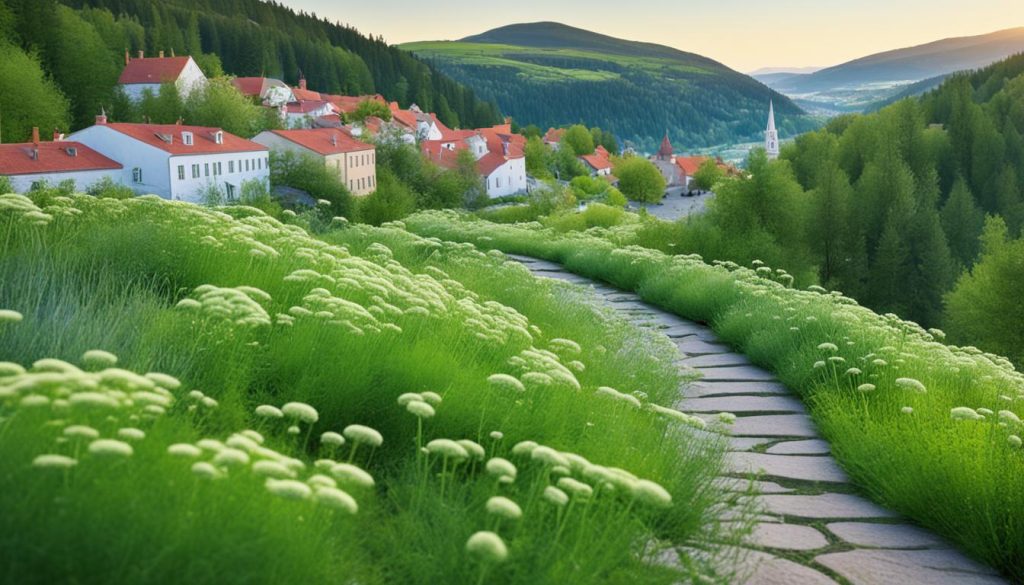
Growing Your Own Dill
Growing your own dill at home is easy and rewarding. It gives you a steady supply of this tasty herb for many recipes. You can grow dill even with a small space, like a patio. It’s a great way to enjoy the health perks of this versatile plant.
Seed Starting and Soil Preferences
Start by picking a sunny spot with soil that drains well. Dill loves warm weather and a bit of dryness. Plant the seeds 12 inches apart, cover them with a thin layer of soil, and keep the soil moist but not too wet.
Harvest and Enjoy
When dill plants are 8-12 inches tall, you can start picking the leaves. Cut off the feathery leaves or the whole plant to get more growth. Use the fresh dill in dishes like pickles or salads to enjoy its unique flavor and smell.
Growing your own dill is easy and fun. With a little care, you’ll always have dill on hand. It’s perfect for cooking and pickling.
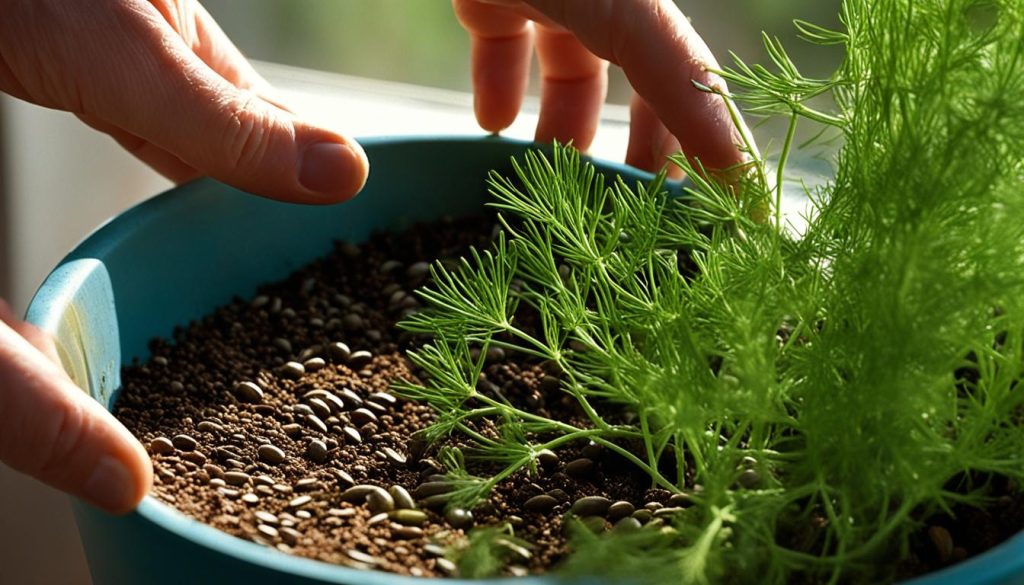
Dill’s Versatility in Sweet and Savory Dishes
Dill has a fresh and herbaceous taste that makes it great for both sweet and savory dishes. It adds a special touch that contrasts well with many foods. This makes it a key ingredient in many recipes.
Dill goes well with lean proteins, crunchy veggies, and creamy dairy. It’s perfect in dishes like grilled salmon or tangy dips. Its bright flavor cuts through rich tastes and brightens the dish.
Dill isn’t just for savory dishes. It also works well in sweets. It balances the sweetness in desserts like sponge cakes or sorbets. This makes it a unique addition to citrus-based desserts too.
Whether you’re making light and refreshing recipes or exploring the history of dill in pickling: from ancient times to today, dill is a great choice. It’s full of health benefits and can make any dish taste better.
| Savory Dill Dishes | Sweet Dill Dishes |
|---|---|
|
|
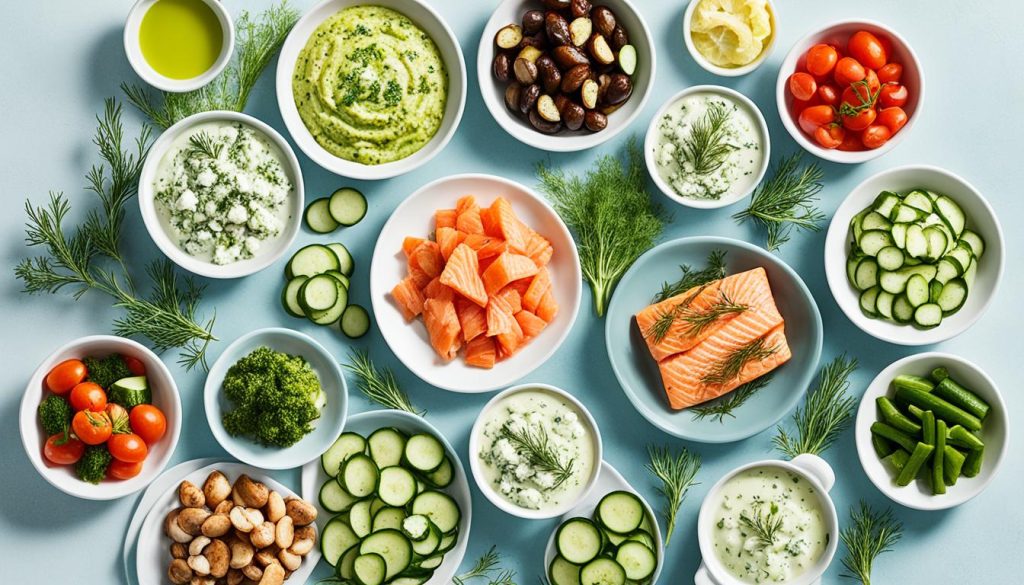
Dill’s unique flavor profile allows it to seamlessly transition between sweet and savory applications, making it a versatile and indispensable herb in the kitchen.
Popular Varieties of Dill
Dill is a versatile herb with many flavors. Each type has its own special taste. Exploring dill can make your recipes light and refreshing.
From Bouquet to Fernleaf
The Bouquet Dill is the most common type. It has tall, feathery fronds that give a strong flavor. It’s great for adding dill flavor to pickles or salads.
If you have little garden space, try Fernleaf Dill. It has delicate leaves and a mild taste. It’s perfect for many dishes, including pickles and health-conscious meals.
Mammoth Dill has big, broad leaves and a strong flavor. It’s often used for pickling because it keeps well. It connects to dill’s long history.
“Dill’s unique flavor profile can truly elevate the simplest of dishes, from light and refreshing salads to time-honored pickling recipes.”
Whether you like Bouquet, Fernleaf, or Mammoth Dill, there’s a type for you. Dill offers many options for your cooking adventures.
Dill’s Pairing with Dairy
Dill is a great herb that goes well with dairy. It makes many light and refreshing recipes better. Its tangy taste matches the creamy flavors of butter, cream, cream cheese, and sour cream. This mix makes dishes taste amazing.
In Eastern European cooking, dill and dairy are a classic pair. They’re used in creamy soups, spreads, and dips. This combo makes quick snacks and rich pastries taste both cozy and fresh.
Adding dill to sour cream on borscht or in cream cheese for toast is popular. Dill’s light touch makes rich dairy dishes taste better. It shows how versatile this herb is in the kitchen.
Dill’s Versatility in Dairy-Based Dishes
- Creamy dill dips and spreads for vegetables, crackers, or bread
- Dill-infused butter or cream cheese for bagels, muffins, or scones
- Dill-flavored sour cream or yogurt as a topping for baked potatoes, chili, or tacos
- Dill-infused custards, quiches, or savory tarts
- Dill-enhanced cheese sauces for pasta, vegetables, or proteins
“Dill is the unsung hero of the herb world, adding a bright, refreshing flavor that complements the richness of dairy products perfectly.”
Dill’s Health Benefits
Dill is more than just a tasty herb. It’s packed with nutrients and antioxidants. This makes it a great addition to your diet.
Dill is full of vitamins A and C, and minerals like calcium and iron. These help keep you healthy and support your immune system. People have used dill for years for its healing properties. It might help reduce inflammation and fight off germs.
Dill also has antioxidants that fight off bad free radicals in your body. This can lower the risk of serious diseases and keep your cells healthy.
When you use dill in recipes, you’re not just adding flavor. You’re also getting health benefits. Dill can help with digestion and protect against harmful substances.
“Dill is not only a delicious seasoning, but it also offers a wealth of potential health benefits that are often overlooked. Its rich nutrient profile and antioxidant properties make it a truly remarkable herb.”
Dill in Pickling and Preservation
Dill is a key herb in pickling and preserving. It has been used for centuries. Its flavor and toughness make it perfect for many foods, like vegetables and seafood.
Dill’s history in pickling shows its lasting appeal. Its strong smell and sweet taste add a fresh touch to foods. Adding dill to pickles or other preserved foods brings health benefits too.
I love how dill can change simple foods into something amazing. My grandma’s dill-garlic sauerkraut and my dill pickled onions are favorites. Dill is great for anyone, whether you’re an expert or just starting.

